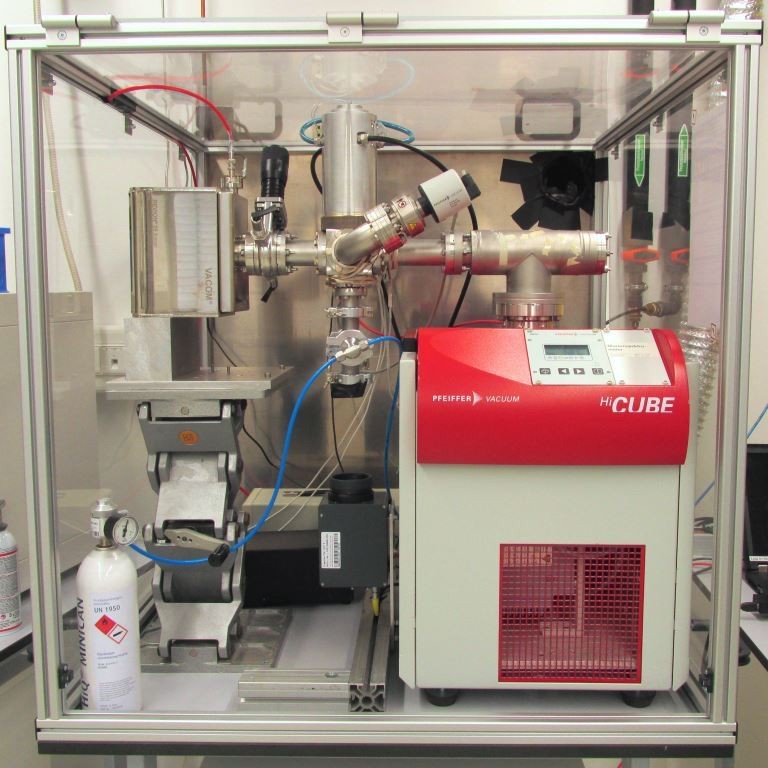Measuring and controlling hydrogen permeation

With the growing importance of power-to-gas and fuel cell applications, metallic components often have to be protected against hydrogen embrittlement. Examples are bipolar plates in SOFC fuel cells, which are exposed to corrosive oxygen and hydrogen atmospheres, as well as hydrogen-induced, lifetime-limiting "white etching cracks" in bearings of wind turbines. One possibility to protect structural components from hydrogen is the application of thin PVD layers. A gas permeation test rig was set up to measure and comparatively evaluate the barrier properties of these coatings during the coating development process.
Based on research as well as atomistic simulations, nanolaminar ternary nitrides were identified as potential materials with good barrier properties. In these "MAX-phase" materials, atomic metal layers alternate with nitride layers. They combine metallic with ceramic properties and combine good chemical resistance with high mechanical damage tolerance. One representative is Ti2AlN, for which a reactive sputtering process has been developed which allows the deposition of very phase-pure MAX phases with preferred crystallographic orientation.
The sheet metal to be tested is clamped vacuum-tight as a "membrane" between two chambers. The gas to be detected (hydrogen or deuterium) is introduced on the high-pressure side, whilst gas molecules on the low-pressure side (10-8 mbar) diffuse through the sheet metal and are detected via mass spectrometry. The temperature of the sheet metal can be varied from room temperature to 300 °C using a radiant heater. By analyzing the ion currents, retention rates are determined. This allows the quantification of the layers’ barrier properties against hydrogen diffusion and a targeted layer development.
 Fraunhofer Institute for Mechanics of Materials IWM
Fraunhofer Institute for Mechanics of Materials IWM